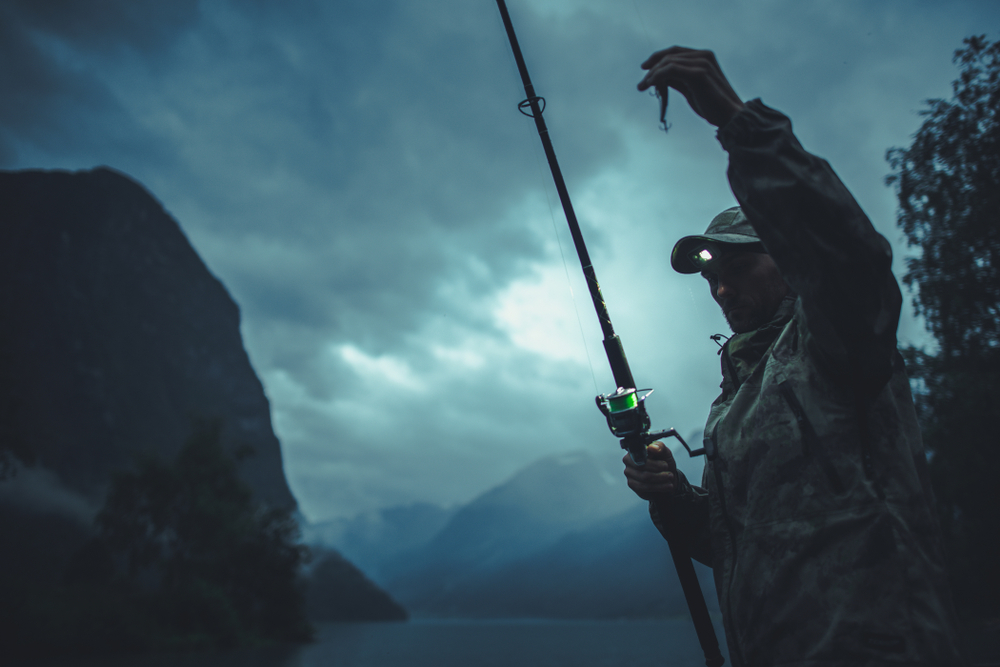

It’s also smart (and mandatory on commercial boats) to use PFDs with reflective tape and waterproof lights to make it easier to locate a man overboard in the dark. Whether you wear PFDs or not is up to the angler and the captain, but it’s not a bad idea, especially at night. Then, there’s the obvious ability to call for assistance if needed. It’s also easier to hail a nearby boat and ask if they want you to pull up, or vice versa. If nothing else, it’s a source of entertainment when things get slow. I always run two – one on scan and the other on the local fisherman’s channel. Most experienced tuna and shark fishermen know and follow proper etiquette, which includes pulling lines and dropping the anchor if someone fighting a fish gets too close. It’s nice to know there are others around should something go wrong, but other boats can get in the way if you’re fighting a fish in tight quarters, which becomes even more challenging in the dark.

Most times, we are fishing in a fleet, which has its pluses and minuses. Try to position them so that they illuminate near the boat without reflecting off the gunwales and deck, especially in a white boat. They use minimal battery power but provide sufficient illumination for catching bait and battling bigger fish. In addition to the standard cockpit and spreader lights, I run two (fore- and aft-facing) Durabrite Mini Sports. Commercial boats often have big light arrays that can just about turn night into day, though smaller boats can get by with less. Lightsįighting big fish at night calls for good lighting. It’s also harder to keep track of the fish’s direction and nearby boats. It’s much harder to keep track of things like lobster pots and anchor balls, and more difficult to steer the fish away from them. Battling fish in the dark, even with good lighting, offers its own set of challenges. More powerful lights become necessary when you get a bite. It gives our crew enough light to work in the cockpit and still be seen by other boats. Most of the boats that fish at night run bright spot and spreader lights as well, but I sometimes run only the anchor and cockpit lights to save on battery power. Whether on anchor or adrift, always have an anchor light turned on. The constant rocking, water lapping against the hull, and commotion on deck checking baits and tending lines usually makes sleeping a futile effort, but some get used to it. Since I typically fish with three anglers, one can slip off for an hour or two to nap (or at least try). Boating regulations require a person on watch at all times while on anchor or adrift. Safety should always be your first priority but that’s especially true when nighttime fishing. Somehow, the strain and fatigue of pulling an all-nighter melt away when all your efforts pay off. I finally decided to suck it up and start doing overnight trips, and it quickly paid off. Meanwhile, other boats were bringing in fish with ridiculous regularity. As much as I tried, I just wasn’t having much luck hooking tuna during daylight hours. But, with the proper precautions and preparation, it does offer more opportunity, and sometimes becomes nearly a necessity to consistently catch big fish. You must endure the dampness and the cold, empty darkness that surrounds you. You’ve got to be prepared to spend the night getting little (if any) sleep. The bait has risen to the surface.įishing offshore at night is not for the faint of heart. I then start seeing flashes of silver beside the boat reflecting the intense Durabrite spreader lights. Soon, everything below the thermocline is clouded up next, the thermocline becomes obscured by clutter. As the night sky grows darker, though, the screen grows whiter. The change is subtle at first, as the thin white haze at the bottom of the fishfinder screen thickens slightly.


 0 kommentar(er)
0 kommentar(er)
